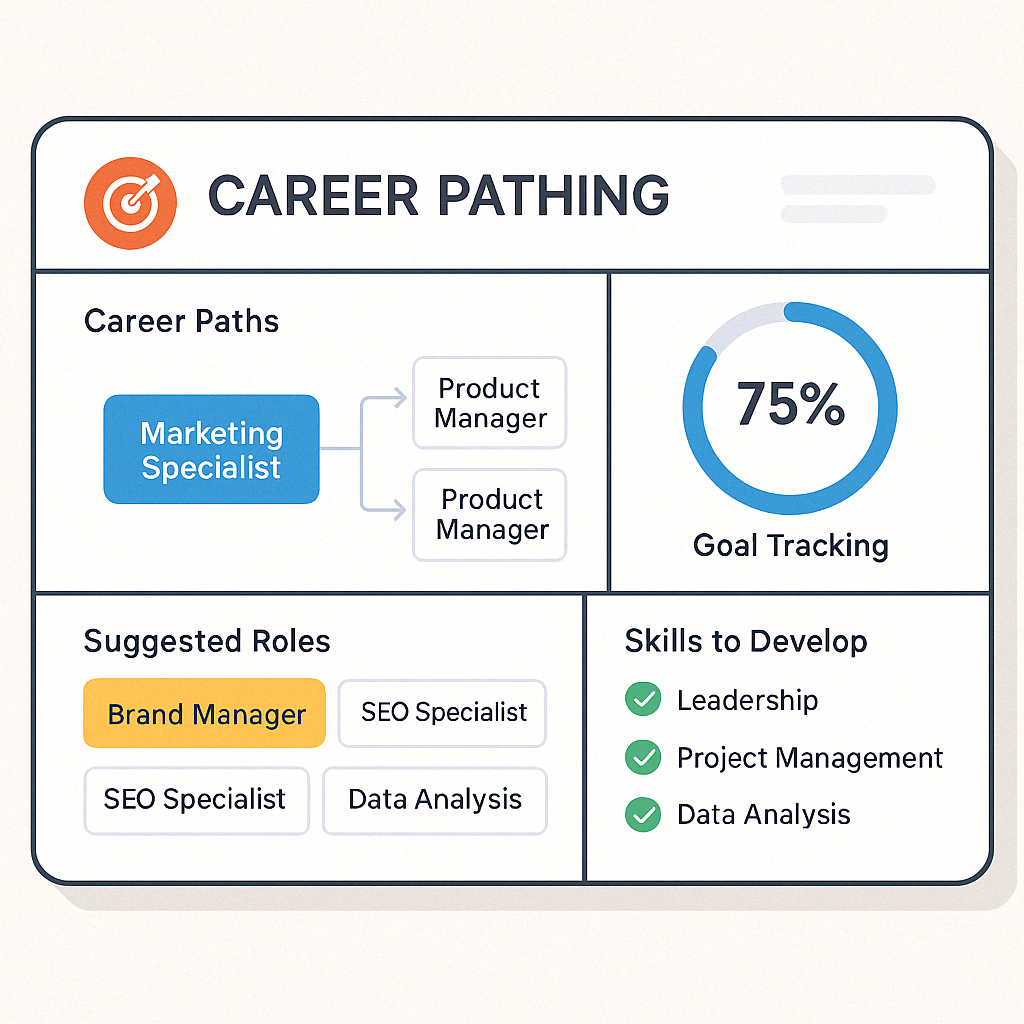Career Pathing Tools: Guiding Employees Toward Meaningful Growth
What Are Career Pathing Tools?
Career Pathing Tools are digital platforms designed to help employees visualize and navigate their career growth within an organization. These tools use structured data—like current skills, interests, role requirements, and learning history—to recommend future roles, identify skills gaps, and suggest training paths.
Unlike static org charts, modern career pathing platforms offer interactive, dynamic, and personalized career journeys.
🔗 Related term: Skills Taxonomy
🔗 Related term: Talent Marketplace
Why Career Pathing Tools Matter
Talent Retention
Employees are more likely to stay when they see visible growth paths.Upskilling and Reskilling
Tools link desired roles with required competencies, helping employees and HR build targeted development plans.Internal Mobility
When combined with Internal Talent Mobility Platforms, career pathing becomes the foundation for effective internal movement.Data-Driven Development
Integrates performance, skill assessments, and engagement data to personalize career planning.
Key Features of Career Pathing Tools
Feature | Description |
|---|---|
🎯 Role Mapping | Visualizes potential lateral or vertical moves based on existing skills and experience |
🧠 AI-Powered Suggestions | Recommends roles, learning content, or mentors aligned with career goals |
📚 Learning Pathways | Links each target role to skills gaps and recommends training content |
🧭 Goal Tracking | Allows users to set and track progress toward personal and career milestones |
📊 Career Analytics | Offers managers insight into team aspirations, mobility trends, and development readiness |

Example Use Cases
A marketing associate aspires to become a product manager. The tool highlights necessary skills like stakeholder management and data analysis, and suggests learning modules and internal projects.
A senior engineer is exploring lateral moves into technical consulting. Career pathing maps alternative tracks and enables coaching support through Employee Experience Platforms.
Benefits for HR and Organizations
✅ Reduced Turnover
Employees are 2–3x more likely to stay when they see a future at the company.
✅ Strategic Workforce Planning
HR gains visibility into skill supply vs. demand and future-ready talent pools.
✅ DEI Enablement
Transparent career paths reduce bias and improve equity in promotions and development.
FAQ: Career Pathing Tools
Q1: How are career pathing tools different from LMS (Learning Management Systems)?
LMS platforms deliver content. Career pathing tools guide employees on which content or experience to pursue based on their desired role.
Q2: Can SMBs benefit from career pathing tools?
Yes. Even small companies can retain and grow talent with structured role and skill mapping. Many tools are modular and scalable.
Q3: How do these tools integrate with other HR systems?
They connect with Skills Taxonomy, performance platforms, ATS, and learning systems to provide a holistic employee development experience.
Conclusion
Career Pathing Tools aren’t just about promotions—they’re about possibilities. By offering clarity, structure, and personalization, these tools empower employees to take ownership of their growth while enabling organizations to cultivate future-ready talent from within.
HR Glossary: Master the Language of Modern HR
From recruiting candidates to onboarding new team members, MokaHR gives your company everything you need to be great at hiring.
Subscribe for more information

